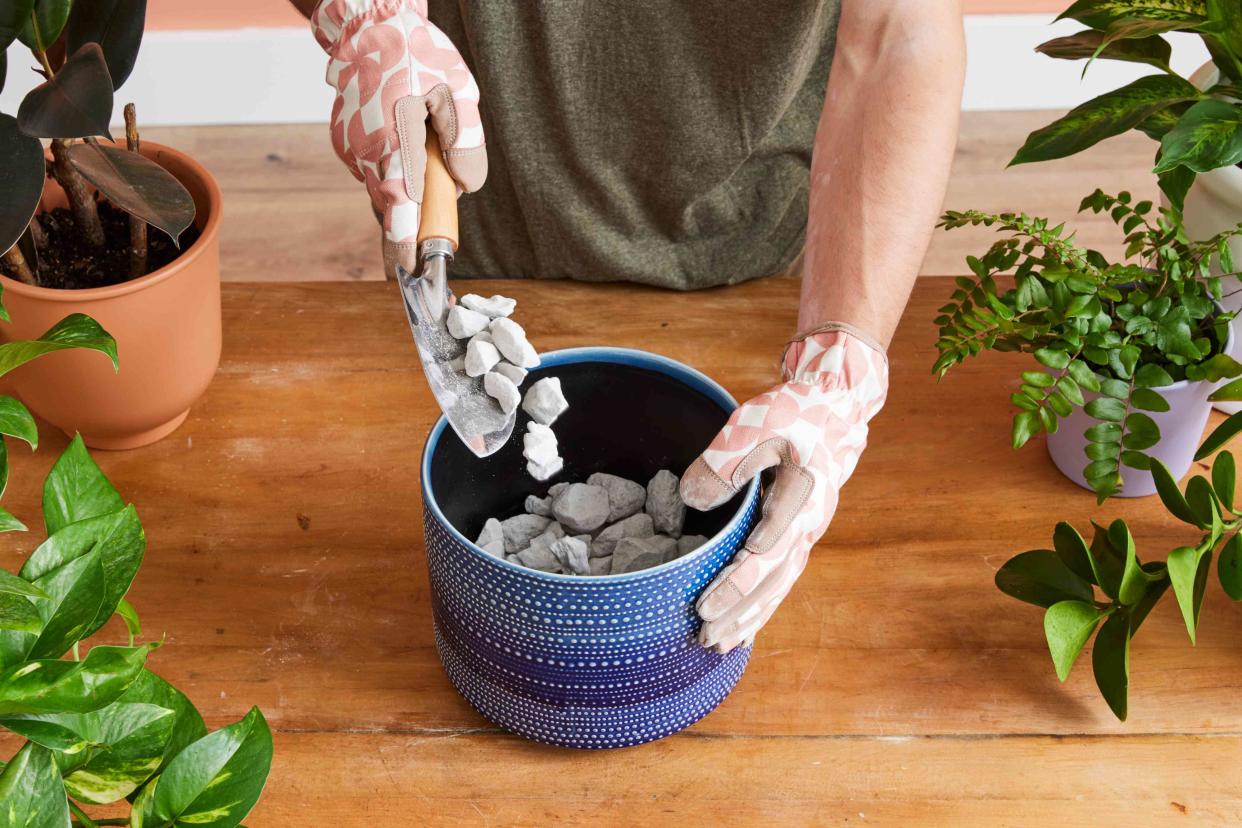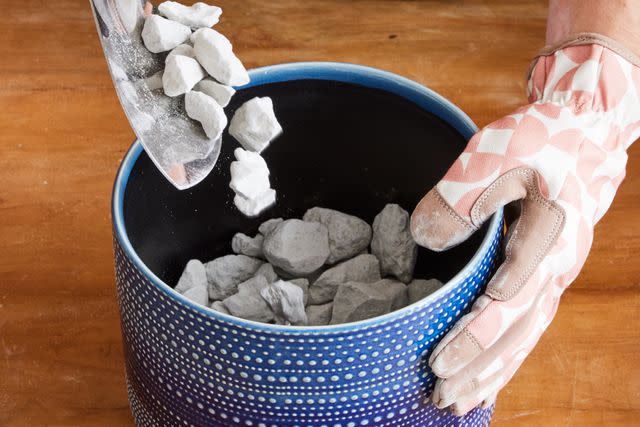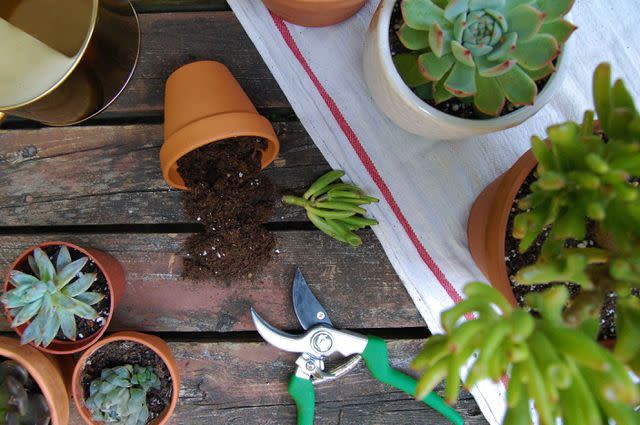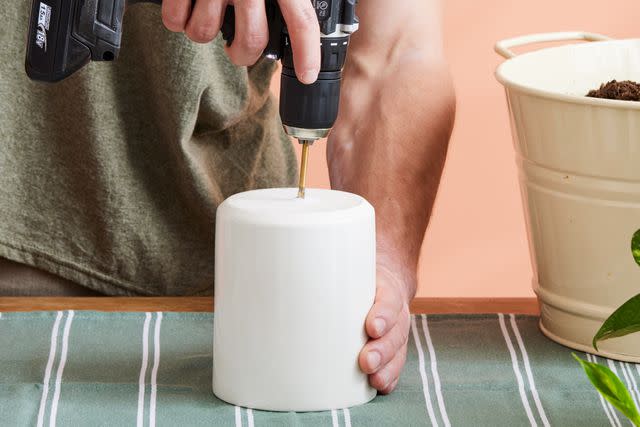Should You Put Rocks at the Bottom of a Planter? We Asked Plant Experts

The Spruce / Jason Donnelly
We all want what is best for our beloved houseplants. So, if there's a chance that putting rocks at the bottom of a planter is going to help them flourish, any good plant parent would do it, right?
Contrary to popular belief, rocks at the bottom of a planter actually lead to root rot rather than prevent it. Here, we ask three experts to explain why and what you can do instead.
Meet the Expert
Laura Janney is a gardening expert, botanical stylist, and founder of The Inspired Garden, an online resource and course center for new and experienced gardeners.
Gene Caballero is co-founder of GreenPal, and has been working in the plant and landscaping industry for more than 25 years.
Ruth Carll is the Rutgers State program leader for consumer horticulture. She holds a master of science in Botany.
Should You Put Rocks at the Bottom of a Planter?

The Spruce / Jason Donnelly
Putting rocks in the bottom of a planter is a bit of a hot topic in the houseplant world. The theory behind the myth comes from the idea that adding rocks to the bottom of a planter will prevent root rot and to counteract the adverse effects of overwatering.
However, Laura Janney, gardening expert and founder of The Inspired Garden, explains that rocks at the bottom of a planter can actually do more harm than good to your plant's roots.
"The last thing you want to do is put any sort of rocks or gravel in the bottom of your container," she says. "Instead of helping with drainage, a layer of rocks, or any different material that is not absorbent, creates a zone of saturation that slowly creeps toward the top of your container."
So, every time you water your plant with rocks at the bottom, you are actually raising the container's water table. This means your plant's roots are left sitting in saturated soil that never dries out, which actually leads to root rot.
"Rocks or no rocks, if there is water sitting in the bottom of a planter, the plant is in danger of root rot," says Ruth Carll, Rutgers State program leader for consumer horticulture. "This health issue isn’t caused by the substrate, rocks or soil, but rather it is caused by standing water."
She notes that salt builds up in this water and creates an overall toxic environment for the roots. This is also why you should empty any standing water in your plant's saucers.
The only reason to put a rock in the bottom of the planter is to cover the drainage hole and keep soil from coming out when you water your plant. Only use one rock per drainage hole.
Want more gardening tips? Sign up for our free gardening newsletter for our best-growing tips, troubleshooting hacks, and more!
Opt for a Planter With a Drainage Hole

The Spruce / Cori Sears
The best way to prevent root rot is to choose a planter with a drainage hole. Drainage holes in planters allow excess water to escape. But we totally get it—sometimes you find such a beautiful hole-less planter that you can't help but want to put a luscious green plant inside. If that's the case, there are workarounds you can try.
2 Alternatives to Using Rocks

The Spruce / Jason Donnelly
Drill Your Own Holes
Instead of adding rocks to a planter without a drainage hole, you can make holes of your own. This is especially easy if your planter is made from wood or plastic because any drill bit will work. However, drilling through metal pots requires a cobalt drill bit.
As far as drilling a ceramic pot goes, the process is just a bit more involved—we've got an entire tutorial. We recommend drilling just one large hole in the middle instead of several smaller holes.
Keep in mind that anytime you drill into a flower pot, you run the risk of damaging it. If a container is extra special to you, try out one of the other following methods instead.
Use Two Pots
Another workaround for still getting use out of your decorative drain-hole-free pots is the two-pot method. Simply plant your houseplant in a pot with a drainage hole that is slightly smaller than your decorative pot.
Then, place it inside the decorative pot. Just be sure to remove it from the decorative pot when you water it. Place it back inside after all the water has drained out.
Bottom Line on Rocks
You shouldn't put rocks at the bottom of a planter. If your pot doesn't feature a drainage hole, you can drill one, use the two-pot method, or add a layer of activated charcoal to the bottom.
Read Next: How to Water Plants: 20 Essential Tips
Read the original article on The Spruce.

